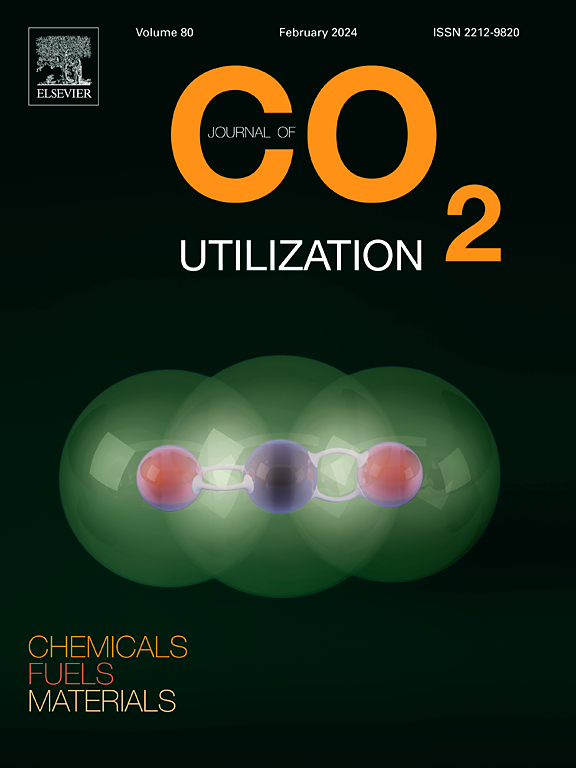在物理和化学吸收剂中使用改进和功能化磁性纳米颗粒的高效二氧化碳吸收
IF 8.4
2区 工程技术
Q1 CHEMISTRY, MULTIDISCIPLINARY
引用次数: 0
摘要
减少全球变暖的一种方法是从废气流中去除、分离和利用二氧化碳。纳米流体属于一种创新的二氧化碳捕获剂,由于其独特的特性,显示出巨大的前景。在本研究中,研究了磁性纳米流体对不同溶剂中二氧化碳的吸收能力和吸收速率的提高。为此,利用谷氨酰胺氨基酸盐和聚乙烯亚胺官能团对Fe3O4磁性纳米粒子进行了功能化。结果表明,添加0.050 wt%的fe3o4 -谷氨酰胺和Fe3O4-PEI纳米颗粒比水基液对二氧化碳的吸收率分别提高21.44%和31.87 %。此外,本研究采用二氧化硅矿物包覆氧化铁磁性纳米颗粒,合成了Fe3O4@SiO2核壳纳米结构,并对其二氧化碳吸收性能进行了研究。结果表明,在最佳质量浓度下,加入0.075 wt%的Fe3O4@SiO2 -谷氨酰胺和Fe3O4@SiO2 -PEI纳米颗粒,与水基流体相比,二氧化碳吸收量分别提高36.04和54.10 %。本文章由计算机程序翻译,如有差异,请以英文原文为准。
Highly efficient CO2 absorption using improved and functionalized magnetic nanoparticles in physical and chemical absorbents
One method for reducing global warming is the removal, separation, and utilization of CO2 from the exhaust streams. Nanofluids, which belong to an innovative category of carbon dioxide capturing agents, exhibit significant promise owing to their unique characteristics. In this study, magnetic nanofluids were investigated to improve the absorption capacity and rate of carbon dioxide in different solvents. For this purpose, glutamine amino acid salt and polyethyleneimine functional groups were applied to functionalize Fe3O4 magnetic nanoparticles. The results show that the addition of 0.050 wt% of Fe3O4–Glutamine and Fe3O4–PEI nanoparticles increased the absorption of carbon dioxide by 21.44 and 31.87 % compared to the aqueous base fluid, respectively. Furthermore, in this study, iron oxide magnetic nanoparticles were coated with silica minerals, Fe3O4@SiO2 core-shell nanostructures were synthesized, and their performance in carbon dioxide absorption was investigated. The findings indicate that the incorporation of 0.075 wt% of Fe3O4@SiO2–Glutamine and Fe3O4@SiO2–PEI nanoparticles at the optimal weight concentration resulted in a 36.04 and 54.10 % enhancement in carbon dioxide absorption, respectively, in comparison to the water-based fluid.
求助全文
通过发布文献求助,成功后即可免费获取论文全文。
去求助
来源期刊

Journal of CO2 Utilization
CHEMISTRY, MULTIDISCIPLINARY-ENGINEERING, CHEMICAL
CiteScore
13.90
自引率
10.40%
发文量
406
审稿时长
2.8 months
期刊介绍:
The Journal of CO2 Utilization offers a single, multi-disciplinary, scholarly platform for the exchange of novel research in the field of CO2 re-use for scientists and engineers in chemicals, fuels and materials.
The emphasis is on the dissemination of leading-edge research from basic science to the development of new processes, technologies and applications.
The Journal of CO2 Utilization publishes original peer-reviewed research papers, reviews, and short communications, including experimental and theoretical work, and analytical models and simulations.
 求助内容:
求助内容: 应助结果提醒方式:
应助结果提醒方式:


